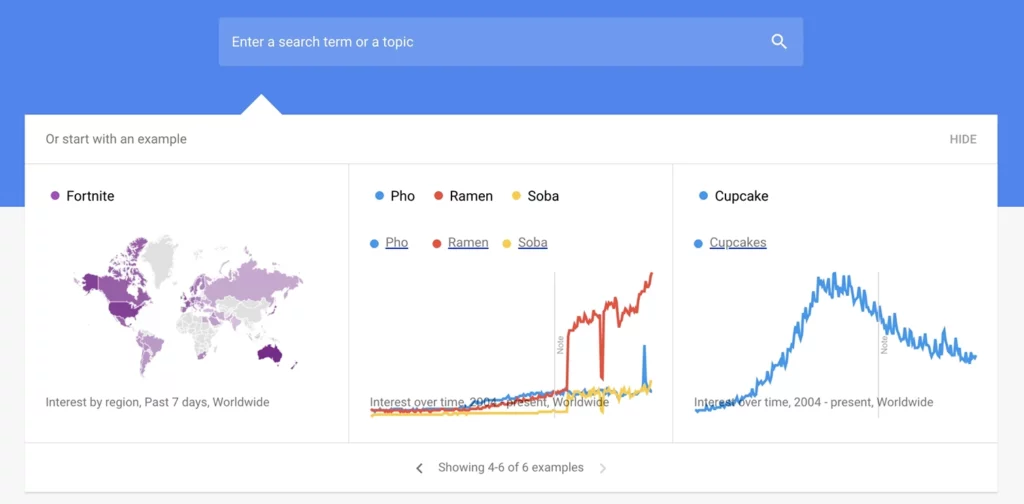Only $99 for a full year!
No credit card required
Rank on Google's first page in 3 months
7 SEO Forecasting Tool Every Marketer Should Know
Dec 26, 2024 | user
A good SEO strategy is all about looking ahead and preparing for what’s coming. This helps you feel more secure about your business’s future.
In SEO, there’s a method called SEO Forecasting.
It involves predicting your website’s performance changes by analyzing various metrics to anticipate future search positions and effectively support your digital marketing campaigns.
Finding this technique a bit stressful? No worries! With the help of powerful SEO forecasting tools, you can easily tackle it. These tools assist in creating SEO forecasting measures for your business.
In this blog, let’s check out 7 of the best SEO forecasting tools to enhance your SEO strategy.
Top 7 SEO Forecasting Tools in 2025
Here, we can discuss the 7 best SEO forecasting tools with unique features for your forecasting process.
1. SuiteJar

SuiteJar is a comprehensive content marketing and SEO forecasting tool that analyzes data using the best features available. It provides detailed reports on content optimization, easy web analytics, and content calendar generator.
The tool will provide you with insights that will help you optimize your website SEO strategy.
With the easy web analytics feature, you can seamlessly integrate your GA4 account. All your critical data can be gathered and displayed in one place, giving you insights into user numbers, new users, page views, bounce rates, and average time spent.
The data can be segmented daily, weekly, or monthly.

Alt text: SuiteJar Competition Analysis Feature
- Content Optimizer
Content Optimizer is a valuable feature for SEO forecasting, helping you identify pages with the highest potential to rank on Google. It highlights areas where targeted edits can improve your rankings, providing actionable insights directly within the feature. With these tips, you can seamlessly optimize your content for better performance.
- Content Calendar Generator
The Content Calendar feature simplifies planning by allowing you to create a well-structured content schedule effortlessly. Enter the necessary details, and the AI will generate a tailored content calendar in seconds. You can also export it as a spreadsheet for easy access and collaboration.
2. Google Trends

Google Trends is a free tool that is provided by Google for everyone to use. It tracks and analyzes the popularity of search queries over time. It analyzes the popularity of search queries over time across various regions and languages.
It visually represents the interest in specific keywords or topics, showing how they have trended historically.
By understanding the trends and seasonal fluctuations in keyword popularity, businesses can anticipate future changes in search demand. This insight helps optimize content calendars and align SEO strategies with expected search patterns.
3. SEMrush

SEMrush is another SEO tool that offers detailed keyword analysis, competitor research, and site audit features. Its forecasting capabilities allow users to predict future traffic and ranking changes based on current data.
It enables users to estimate future traffic based on current keyword positions and trends. This information is crucial for predicting how changes in SEO strategies might impact website traffic and rankings.
4. Ahrefs

Ahrefs is excellent for its extensive backlink analysis but also offers forecasting features. Its “Traffic Value” metric estimates a website’s potential traffic and revenue, providing valuable insights for SEO forecasting.
The tool has the potential monetary value of organic traffic to a site. This feature helps forecast the potential return on investment (ROI) from SEO efforts, guiding budget allocation and strategy planning.
Suggested Read: Best Backlink Checker Tools
5. Moz Pro

Moz Pro is an all-in-one SEO tool with keyword research, site audits, and rank-tracking features. Its “Keyword Difficulty” tool predicts the competitiveness of a keyword, helping businesses choose the most effective strategies.
It helps predict how challenging it will be to rank for specific types of keywords. This insight assists in prioritizing keywords that offer the best balance between high traffic potential and achievable competition levels.
Also Read: List of Best Keyword Research Tools in 2024
6. Serpstat

Serpstat offers a variety of SEO features, including keyword research, rank tracking, and site audit features. Its “Keyword Clustering” tool helps identify related keywords and predict their future popularity.
The “Keyword Clustering” feature helps identify groups of related keywords and their potential popularity. This tool helps forecast keyword trends and optimize website relevant content for a broader range of related search queries.
7. SpyFu

SpyFu specializes as a competitor analysis tool, providing insights into their top-performing keywords and ad campaigns. Its forecasting feature allows users to see how competitors’ strategies may change in the future.
By analyzing competitors’ strategies and performance, SpyFu helps forecast potential shifts in the competitive landscape. By understanding these trends allows businesses to adapt their SEO strategies proactively, staying ahead of competitors.
Conclusion
To wrap up, if you want to get better at predicting and improving your SEO, these seven tools can help. They make it easier to plan your marketing and know what’s coming next. Every SEO planning tool has its distinct features for forecasting.
Check out SuiteJar – it’s a new tool that has everything you need for SEO forecasting, all in one place. Using the right SEO forecasting tool can make a big difference in how well you do in SEO.
FAQ
1. What is SEO forecasting?
SEO forecasting involves predicting and analyzing future trends and outcomes related to search engine optimization. It helps businesses anticipate changes, optimize strategies, and stay competitive.
2. Which SEO forecasting tool is best?
There are various options like SuiteJar, Ahrefs, Spyfu, Semrush, and Serpstat. Choose the one with all the features you need for your SEO forecasting.
3. How to do SEO forecasting?
Businesses can use SEO forecasting tools to analyze data trends, keyword performance, and market dynamics. They can make informed decisions to improve website visibility and organic search rankings by assessing these factors.


